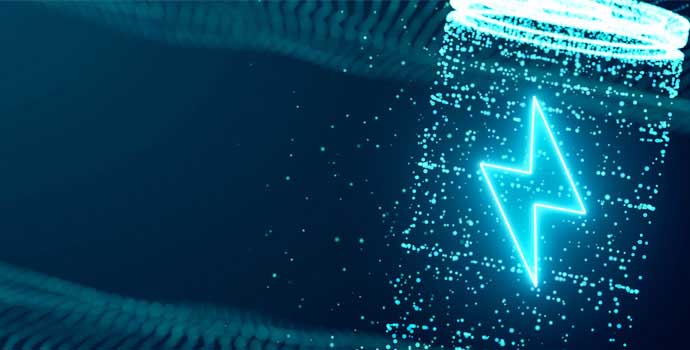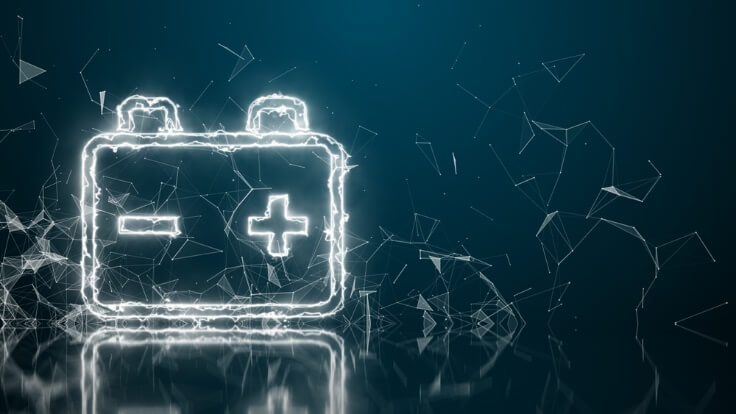It's frustrating when your electronic equipment stops working because of a dead lithium battery, therefore you've probably thought about how to revive a lithium-ion battery.
However, if you have the appropriate information and take the right methods, you can revive a non-working lithium-ion battery.
Although lithium-ion batteries have numerous advantages, many of them can fail under extreme pressure, as discussed in this detailed instruction on how to revive a dead lithium-ion battery. You can safely and effectively resuscitate a dead lithium-ion battery by following the information and procedures we provide.
It's important to have a foundational knowledge of lithium-ion batteries before diving into the procedure of jumpstarting a dead battery.
Due to its high energy density, lightweight construction, and long-lasting performance, lithium-ion batteries are widely employed in a wide variety of portable electronic gadgets.
The components of these batteries are the cathode (the positive electrode), the anode (the negative electrode), and the electrolyte.
To jump start a car or motorcycle, you need a portable equipment called a lithium battery jump starter. It replaces bulkier and potentially dangerous lead-acid jump starters. Because they are less likely to overheat, jump starters powered by lithium batteries are also a better choice for use in hot weather.
The use of a jump starter with a lithium battery has the following advantages:
Compared to conventional lead-acid jump starters, these are easier to transport and store.
Since they don't generate any harmful byproducts when used, they're much less risky.
They perform well in high temperatures.
Compared to lead-acid jump starters, they last far longer.
A lithium battery jump starter is an excellent choice if you need a safe, dependable, and portable device to jump start your automobile or lithium motorcycle battery.
More information regarding jump starters with lithium batteries is provided below.
They can provide greater power to start a vehicle or motorcycle since they have a higher cranking amps (CCA) rating than lead-acid jump starters.
They are not limited to just powering your laptop or mobile device.
In the event of an unexpected breakdown, certain lithium battery jump starts have built-in flashlights.

It's common knowledge that lithium batteries operate exceptionally well. And lithium jump starters can trace their ancestry back to lithium batteries.
As a result, lithium jump starters are lighter, smaller, and have a higher energy density.
As a result, a lithium jump starter can be taken anywhere. If you're new to the industry, you'll find below detailed descriptions of the excellent performance of lithium batteries.
A large amount of current can be produced by a battery with a high discharge rate. Lithium battery packs outperform lead-acid battery packs in this scenario because they can be discharged at high current rates without losing Ah capacity, whereas lead-acid batteries can have their Ah rating reduced to 40% at high discharge rates, making them unsuitable for powering high-current loads like air conditioners or microwaves.
Since the volume capacity density of lithium batteries is often around 1.5 times that of lead-acid batteries, their volume is typically 30% less than that of lead-acid batteries of the same capacity.
Lithium batteries last significantly longer than lead-acid ones. They can keep their charge for months at a time without suffering from significant self-discharge.
This means you can keep a lithium jump starter in your car or emergency kit and use it whenever you need it, no matter how long it has been sitting there.
Lithium battery jump starts provide cutting-edge safety features to protect the user and the device. These safeguards protect against potential dangers like short circuits, reverse polarity, overcharging, and overdischarging.
Their purpose is to make the process of jump-starting a vehicle safer and more reliable.
Lithium-ion batteries have earned a stellar reputation for their durability and longevity. They fare better than lead-acid batteries in extreme temperatures, humidity, and mechanical stress.
The jump starter is so durable that it can be relied upon even in the worst conditions.
Lithium-ion batteries used in jump starters may be recharged, extending their lifespan and reducing the frequency of battery replacement.
Lithium jump starters are more environmentally friendly than single-use alternatives like lead-acid batteries because they can be used multiple times.

If your lithium-ion battery dies, here are the actions you need to take to jumpstart it:
Awaken the battery Check to see if the charger you plan to use is suitable for the lithium-ion battery you intend to charge.
To find out what voltage and current are best for charging your battery, see the user manual or specs.
Join the power cord or charger. To use, plug the charger or power source into an available outlet. Before continuing, please ensure the charger has been turned off.
A voltage check Check the voltage of the lithium-ion battery with a multimeter. Determining the battery's health in this way is completely discretionary but highly advised.
Fasten the jumper cables or alligator clips. The lithium-ion battery's positive (+) terminal must be connected to the charger's or device's positive (-) terminal.
Similarly, link the dead battery's negative terminal (-) to the source's negative terminal (-). Check that everything is securely fastened.
Watch how the battery is being charged. Get the charger going and keep an eye on it while it's charging. Be on the lookout for any indicators of overheating, swelling, or strange behavior from both the battery and the charger. Disconnect the charger and get help from an expert if you find anything wrong.
Cut off the power supply or charger. Disconnect the dead lithium-ion battery from the charger or power source after the battery's voltage has stabilized. Carefully disconnect the negative (-) connection first when removing alligator clips or jumper cables.
Try out the recharged battery. Give the lithium-ion battery some time to settle after you've disconnected it from the charger.
The next step is to plug it into the gadget it is powering and turn it on. If the gadget can be powered by the battery, great job! The dead lithium-ion battery has been successfully jumpstarted.
Even if you jumpstart your car's battery, it may still have problems staying charged or functioning properly.
Identifying and fixing such issues requires following some troubleshooting guidelines. First, make sure the charger or power source is appropriate for your battery type. The quality of the lifepo4 battery charger is crucial since incompatible chargers might lead to insufficient charging or harm the battery.
In addition, look for swelling or other external symptoms of damage to the battery, as this can be an indication of a problem on the inside.
It is equally important to check the cleanliness and security of the battery's connections with the charging system. Electrical charging might be impeded by loose or filthy connections.
Proper maintenance is crucial if you want your lithium-ion battery to last as long as possible and operate at its best.
The longevity and performance of your battery can be improved by adhering to these maintenance guidelines. First, you shouldn't ever fully charge or discharge your battery.
Complete discharge can stress the battery and limit its capacity, while overcharging can cause excessive heat and damage the internal components.
High temperatures and moisture can reduce the battery's efficiency and shorten its lifespan, so keeping it in a cool, dry environment is essential. Battery life can be drastically shortened by exposure to either extremely hot or cold environments. Excellent Form
Take all necessary precautions before trying to jumpstart a lithium-ion battery. Essential security measures for the Lifepo4 battery jumpstart procedure are outlined below.
Avoid the accumulation of poisonous gases by making sure the charging area has enough ventilation. Protect yourself from any battery leaks or spills by using safety goggles and gloves.
Fire hazards should be avoided near the charging station. Keep the battery out of direct sunlight and high temperatures.
You'll want the following tools to jumpstart a dead lithium-ion battery:
Power supply or charger that is compatible.
Jumper cables or alligator clips.
Wear protective equipment, such as goggles and gloves.
Voltage measurement multimeter (optional).
You can avoid spending money or wasting time and effort by learning how to jumpstart a dead lithium-ion battery.
Reviving a dead lithium-ion battery and getting your electronics working again is possible provided you follow the instructions carefully and use caution. Maintain a focus on safety at all times, and if you need assistance, get it.

扫码关注
We use cookies to understand how our audience uses our site.
Renon Power websites use cookies to deliver and improve the website experience. See our cookie policy for further details on how we use cookies. Privacy Policy